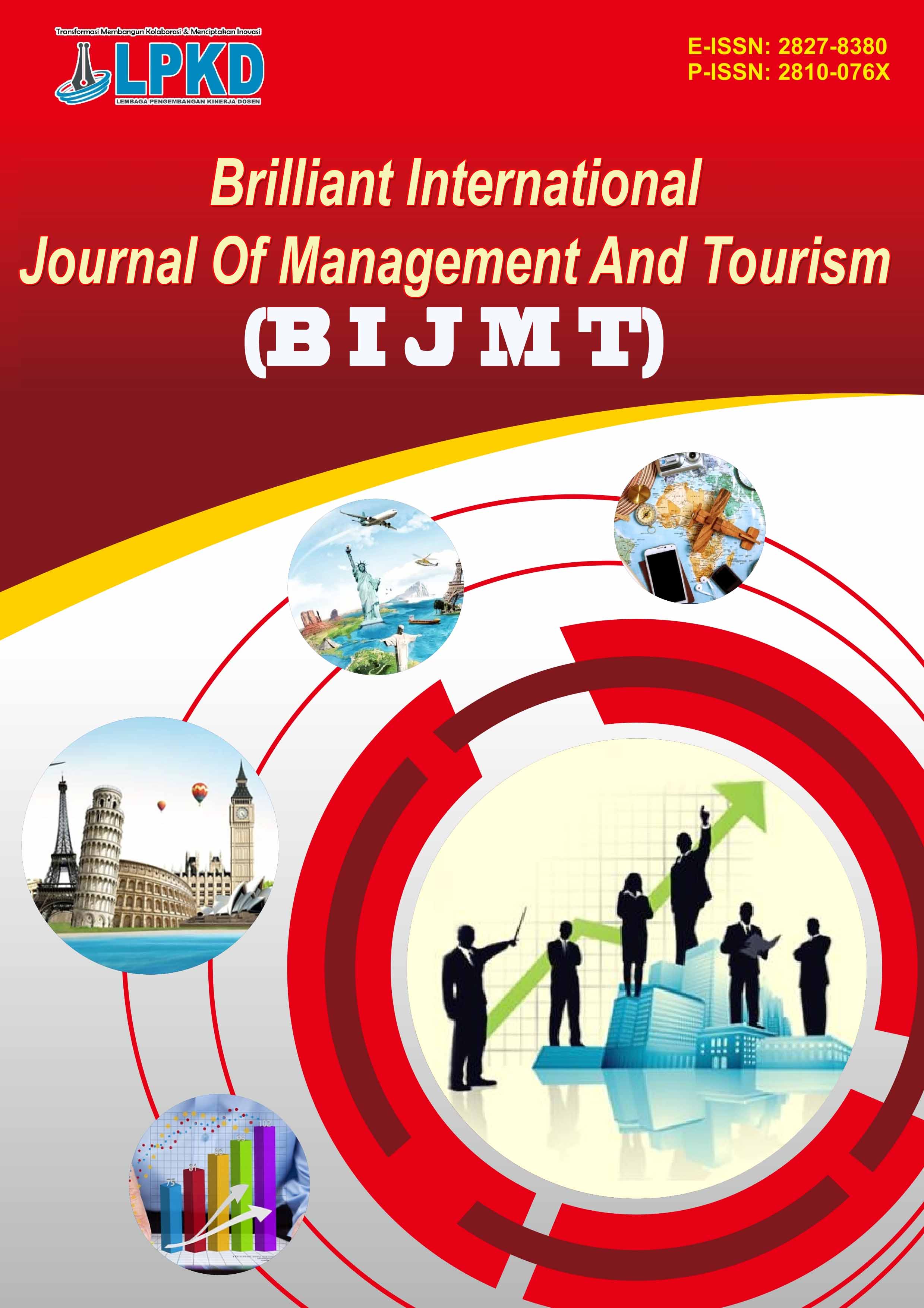The Influence of Facilities, Work Environment, and Job Placement on Employee Motivation at BKPSDM Gresik
DOI:
https://doi.org/10.55606/bijmt.v5i2.4447Kata Kunci:
employee, motivation, work, environment, facilitiesAbstrak
Low employee motivation remains a persistent issue in many public institutions, including the Badan Kepegawaian dan Pengembangan Sumber Daya Manusia (BKPSDM) of Gresik Regency, where challenges related to inadequate facilities, suboptimal work environments, and misaligned job placements have been identified. This study investigates the extent to which these three organizational factors—facilities, work environment, and placement—influence employee motivation. A quantitative research approach was employed using a saturated sample of 49 civil servants, with data collected via structured Likert-scale questionnaires and analyzed through multiple linear regression. The results indicate that all three variables significantly and positively affect motivation, with the work environment having the strongest influence, followed by facilities and placement. The model explains 64.6% of the variation in employee motivation, underscoring the central role of institutional conditions in shaping staff engagement. While BKPSDM has introduced initiatives such as GAPURA to support professional development, notable gaps remain in basic infrastructure, environmental comfort, and strategic role assignment. These findings highlight the urgent need for targeted interventions in workspace design, equipment modernization, and competency-based placement strategies. The study provides practical guidance for government managers seeking to improve workforce morale and productivity. Future research should consider longitudinal designs and incorporate organizational culture and leadership as mediating variables to deepen understanding of motivation drivers in the public sector.
Referensi
Afandi. “Pengaruh lingkungan kerja terhadap kinerja karyawan.” Jurnal Organisasi dan Pengembangan, vol. 12, no. 1, 2023, pp. 45–56.
Armstrong, M., and S. Taylor. Armstrong’s Handbook of Human Resource Management Practice. Kogan Page, 2020.
Awada, M., B. Becerik-Gerber, E. White, and G. Lucas. “The impact of indoor environmental quality on employee productivity and comfort: A review.” Building and Environment, vol. 205, 2021, p. 108222. https://doi.org/10.1016/j.buildenv.2021.108222.
Bayu Surya Parwita, I. M., I. M. D. Wirya, and I. M. A. Gita. “Work environment and its effect on public employee performance.” Journal of Human Capital, vol. 5, no. 2, 2023, pp. 97–108. https://doi.org/10.2991/jhc.v5i2.2023.014.
Chaudhary, R., and T. K. Panda. “Workplace spirituality and employee commitment: The role of emotional intelligence and spiritual intelligence.” Management Decision, vol. 56, no. 3, 2018, pp. 756–770. https://doi.org/10.1108/MD-07-2017-0707.
Danisa, V. A., and A. N. Komari. “Psychological environment and motivation: Exploring public service outcomes.” Indonesian Journal of Behavioral Sciences, vol. 6, no. 1, 2023, pp. 54–66. https://doi.org/10.21831/ijbs.v6i1.2023.7781.
Deci, E. L., A. H. Olafsen, and R. M. Ryan. “Self-determination theory in work organizations: The state of a science.” Annual Review of Organizational Psychology and Organizational Behavior, vol. 4, 2017, pp. 19–43. https://doi.org/10.1146/annurev-orgpsych-032516-113108.
Gunawan, R., D. Saputra, and A. Maulida. “The role of intrinsic and extrinsic motivation in civil servant performance.” Public Administration Review, vol. 10, no. 3, 2020, pp. 210–225.
Ismawati, I., and I. Komalasari. “Pengaruh fasilitas terhadap motivasi kerja karyawan.” Jurnal Manajemen dan Bisnis Indonesia, vol. 9, no. 1, 2022, pp. 34–44.
Jufrizen, J. “Fasilitas kerja dan kinerja pegawai negeri.” Jurnal Sumber Daya Manusia, vol. 7, no. 1, 2021, pp. 50–60.
Juliani, L., R. Wardhani, and N. Alfira. “Lingkungan kerja sebagai penentu utama motivasi pegawai.” Jurnal Ilmu Administrasi Publik, vol. 12, no. 2, 2023, pp. 77–89.
Kristof-Brown, A. L., R. D. Zimmerman, and E. C. Johnson. “Consequences of individuals’ fit at work: A meta-analysis of person–job, person–organization, person–group, and person–supervisor fit.” Personnel Psychology, vol. 58, no. 2, 2005, pp. 281–342. https://doi.org/10.1111/j.1744-6570.2005.00672.x.
Latham, G. P., and C. C. Pinder. “Work motivation theory and research at the dawn of the twenty-first century.” Annual Review of Psychology, vol. 56, no. 1, 2005, pp. 485–516. https://doi.org/10.1146/annurev.psych.55.090902.142105.
Mahmudin, A. S. “Motivational dynamics in public administration.” Journal of State Management, vol. 4, no. 2, 2020, pp. 85–93.
Moenir, H. A. Manajemen Pelayanan Umum di Indonesia. Bumi Aksara, 2021.
Muslim, M., J. Junaidi, and Z. Zakaria. “Penempatan kerja dan efektivitas organisasi.” Jurnal Ilmu Manajemen Publik, vol. 9, no. 1, 2024, pp. 43–55. https://doi.org/10.1057/jimp.2024.006.
Noe, R. A., J. R. Hollenbeck, B. Gerhart, and P. M. Wright. Fundamentals of Human Resource Management. 9th ed., McGraw-Hill Education, 2021.
Nur Rahmi, N., and N. Naue. “Strategic placement of human resources in the public sector.” Journal of Public Sector Management, vol. 6, no. 3, 2022, pp. 112–124.
Saydam, G., and S. Widodo. “Motivasi dan produktivitas kerja.” In Psikologi Kerja Modern, edited by A. Mahmudin, Andi, 2020, pp. 56–72.
Sedarmayanti. “Lingkungan kerja dan produktivitas pegawai.” Jurnal Psikologi Industri, vol. 15, no. 1, 2023, pp. 12–22.
Sekiguchi, T. “A contingency perspective of the importance of P–J fit and P–O fit in employee selection.” Journal of Managerial Psychology, vol. 28, no. 2, 2013, pp. 173–189. https://doi.org/10.1108/02683941311300650.
Simone, S. “Expectancy value theory: Motivating employees.” International Journal of Management, Applications and Research, vol. 7, no. 1, 2020, pp. 18–29. https://doi.org/10.18646/2056.71.20-002.
Tavira, G., H. Zaki, and W. L. Hardilawati. “The role of office environment and facilities in motivating civil servants.” Asian Journal of Administrative Studies, vol. 8, no. 2, 2023, pp. 100–110.
Tunsiah, T., and T. H. Soantahon. “Corporate university sebagai strategi pengembangan SDM aparatur.” Jurnal Kebijakan Publik, vol. 11, no. 1, 2021, pp. 31–40.
Yandi, R., and M. Trimerani. “Pengaruh fasilitas terhadap motivasi kerja di sektor publik.” Jurnal Ekonomi dan Manajemen Publik, vol. 14, no. 2, 2023, pp. 78–88.
Zhang, X., and K. M. Bartol. “Linking empowering leadership and employee creativity: The influence of psychological empowerment, intrinsic motivation, and creative process engagement.” Academy of Management Journal, vol. 53, no. 1, 2019, pp. 107–128. https://doi.org/10.5465/amj.2010.0985.
Unduhan
Diterbitkan
Cara Mengutip
Terbitan
Bagian
Lisensi
Hak Cipta (c) 2025 Brilliant International Journal Of Management And Tourism

Artikel ini berlisensiCreative Commons Attribution-ShareAlike 4.0 International License.






